An AFSIG Article by Paul Trittenbach
This time of year always seems to carry with it a certain atmosphere. The holidays bring a dramatic change in people — both good and bad — along with the change in the weather. As a child, I remember this time of the year for all the holiday festivities and the specials that ran on television. One of my first experiences with a holiday story was the black and white movie version of Charles Dickens’, A Christmas Carol, starring Alastair Sim. This reverse version of Dr. Jekyll and Mr. Hyde, where Mr. Hyde turns back into Dr. Jekyll, was a stirring demonstration of two of the greatest human emotions: love and compassion! In the story a bitter old miser named Ebenezer Scrooge is transformed into a kindly and gentle soul after the visitation of the ghost of his former business partner, Jacob Marley, and three spirits who represent the ghosts of Christmas past, present and future.
As I sit here writing and listening to the music of Bob Marley (I don’t have any works by Jacob) I am reminded that I have to complete an article for December. Bob Marley may not be appropriate Christmas music but he does remind me of Jacob and that moving story by Charles Dickens. So here I am to haunt you with the forecast that this Christmas you will be visited by three spirits: the ghost of Stellar Past, Stellar Present and Stellar Future—all in one night. In their presence and enlightened by the knowledge of their workings I hope that you will be transformed into a new man. May the spirits move you and forever transform the way you see the universe.
Now that you have made it through the Thanksgiving holiday and are hoping that Santa is going to bring you a workout video, let’s start with a workout warm-up by lifting and toting that telescope. 1 and 2 and lift and carry and set up the tripod; 3 and 4; and collimate and…
There’s really nothing like a good workout to get the heart pumping and keep the joints flexible. But we are also going to workout our eyes and brains as we ponder the celestial objects overhead.
Wintertime brings on a great deal more than an opportunity to test your mettle against the frigid cold of the season. Darkness falls early this time of the year, so it’s easy to get outside and see many of the spectacular objects of December. In a single night, my neighborhood becomes haunted by the ghosts of stellar past, stellar present and stellar future. I’m no Scrooge! Every December, around Christmas, I pull my telescope out of the closet and set it up in front of my house to present the entire neighborhood with a Cosmos Carol. What could be a better and bigger gift than offering everyone the entire universe?
But I have a real star Party! I purchase bulk cookies, hot chocolate and coffee and have a microwave handy to warm the milk for the chocolate and a coffee marker for fresh coffee.What could possibly complement a good workout better than hot chocolate and cookies? I have a portable radio handy and put on some music to create ambiance for the evening. You can start the evening with appropriate stargazing music, such as the Planets by Holst or you may choose to create a compilation of astronomy related music. For me, music and stargazing goes hand-in-hand.
Ebenezer’s transformation from Mr. Hyde into Dr. Jekyll centers on a couple of supporting characters that include his clerk, Bob Cratchit and his entire family, and Ebenezer’s nephew and his family. Scrooge is visited by the spirit of Marley who informs him that he will be visited by the ghost of Christmas past, present and future to be shown the error of his ways and given another chance to make things right. As a reformed man, he wakes up to a new day — Christmas Day — with a brand-new heart.
Ebenezer had to wait until the clock struck 1 AM before he was able to start his journey to becoming a transformed man. You will be able to start your journey as soon as the sun goes down and your telescope is set up. Ebenezer’s journey to New Manville begins with a visit by the ghost of Christmas past, who shows him the pain and tragedy of all the things that Ebenezer missed — including lost love — during his youth. The universe is far kinder to us because light travels at a fixed rate of speed and we are able to journey into the past by simply pointing our telescopes anywhere. In essence, we haven’t missed anything from the stellar past. Nature offers up her secrets if we look far enough across the cosmic ocean. But the ghost of stellar past does reveal to us that there is pain and tragedy in the death throes of stars!
The Ghosts Of Stellar Past
Located 1500 light years from Earth in the sword of Orion’s belt is M42, the Great Orion Nebula. This combination reflection and emission nebula is the product of an enormous explosion of an old red giant millennia ago. When the fuel of that star was exhausted, its outer layers succumbed to gravity and collapsed into its core within a few seconds, until the atoms could no longer crowd together. With the explosive force of thousands of hydrogen bombs they were shot away at supersonic speeds into interstellar space.
The result is an expanding cloud of dust and gas that today occupies an area of 24 light years across by 50 light years high. As the cloud continued to expand outward at supersonic velocities the gases and dust crashed into one another further compressing them to form more complex molecules, including the organic molecules of living things. The death of the red giant mother that led to the creation of M42 also gave birth to new stars and nascent solar systems. Within M42 there are 700 known stars, 150 of which possess protoplanetary disks. These stars are at various ages of formation with the youngest and brightest members believed to be only 10,000 years old and the oldest no older than 300,000 years. Within dense cocoons of gas new protostars are
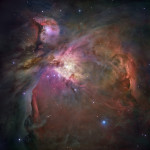
Hubble Image
forming.
At the center of the nebula is a collection of four stars that form a trapezoidal shape known as the Trapezium. These four stars emit light in the ultraviolet region, exciting the surrounding gas and causing them to glow in the brilliant colors we see in images of the nebula. At the same time, the energy of the stars is carving a cavity within the nebula and causing many of the young stars to erode away. The nebula is both mother and cannibal!
Dark, cavernous areas within the nebula contain BOK globules. This is protostellar matter that will collapse under the forces of gravity to ignite as stars. In addition to the young, hot stars, the Hubble space telescope has spotted numerous black dwarfs within the nebula. These objects are too small to become stars and remain cold because they cannot sustain their cores way stars like our sun do. The Great Orion Nebula emits light predominately in the ionized oxygen region. You will find that an OIII filter will help you to pull out details of this stellar ghost.
M43 is a smaller nebula associated with the Great Orion Nebula and part of the entire structure known as the Orion complex. In images and shorter focal length eyepieces of our telescopes M43 seems to be attached to the Great Orion Nebula. It is also located 1500 light years from Earth in her prolific stellar nursery. Recent Hubble Space Telescope images have shown a lobe attached to M43 that is pushing back against the erosion caused by the ultraviolet radiation of the stars of M42.
Like a ghostly eye 2200 light-years away in the constellation Cygnus NGC 6826, the Blinking Planetary Nebula stares back at you through the telescope. This is a remnant of the star similar to our sun that grew to the red giant phase and then shed off its outer layers leaving a star of carbon and oxygen — a white dwarf — as a corpse. The gas layers expand into interstellar space and form a large bubble that emits light because it is excited by the ultraviolet radiation of the white dwarf at its center. Planetary nebulae result when low mass stars like our sun swell into a red giant phase at the end of their life. Instead of erupting in violent explosions, they shed their outer layers to create ghostly and beautiful clouds. Unfortunately, the white dwarf star that is left behind generates enough energy to quickly erode the nebula, and these types of nebulae have short periods of only about 10,000 years, as opposed to the billions of years of their parent stars.
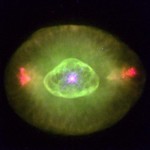
Located 6500 light years away in the constellation Taurus is M1, the Crab Nebula. Like the Great Orion nebula, M1 is a supernova remnant, that has expanded to currently occupy a radius of 10 light years and is still expanding at a velocity of 1500 kilometers per second. Through the telescope M1 appears as an oval shaped mass of filaments. These filaments are the remains of the layers of the parent star’s atmosphere.
The beating heart of the Crab Nebula is a pulsar — a neutron star rotating at approximately 30 times per second. The pulsar is approximately 30 km across and emits radiation in x-ray wavelengths. This ionizes and excites the cloud of gas which is predominantly hydrogen and helium. The nebula is visible to telescopes with apertures as small as 4 inches but it glows at a magnitude of 9.0 and details of it can only best be experienced through a large aperture telescope. The pulsar beating at its heart is only visible through apertures of 20 inches or larger.
The supernova explosion that created M1 was witnessed by Chinese astronomers in 1054 A.D. It glowed so bright that it could be seen in the daytime and people could read by it at night for two months after the initial explosion. According to Chinese records M1 was the brightest object in the sky, next to the moon, and reached the magnitude of -7.0. It remained visible in the night sky for 653 days after its initial discovery.
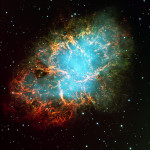
NASA Image
The clock struck 2:00 and Ebenezer was awaken by the spirit of Christmas Present. Ebenezer was taken along the streets of the city and shown the tragedy of those who were less fortunate. He had walked among those streets every day and seen the suffering of the masses but he chose to remain blind to them and ignorant of the fact that if all men truly loved each other they could solve all human suffering. The second ghosts to visit us, the Ghosts of Stellar Present, will take us through the streets of our “star city,” the Milky Way, and show us some souls that burn brightly — in some cases upon other worlds. However, I caution you to not be complacent because even our star, the sun, could rear up an ugly head and deliver a storm that could one day leave us hoping for mercy. Humans may be cruel but nature has no concept of good and evil. Its cycle of destruction and creation are simply defined as “existence”.
Ghosts of Stellar Present
If you need to show a ghost of stellar present, you wouldn’t have to go any farther than your backyard. Our sun is an excellent example of a medium yellow star that burns brightly enough and long enough to sustain planets that harbor life. If you own a solar telescope or solar filter and you prefer to set up in the daytime, than the sun would be both an easy target and a well-known celestial object for presenting as a ghost of stellar present. But if you’re looking for a nighttime analog there are billions of type G stars in the Milky Way galaxy. First, we will start by talking about our sun. Regardless of any nighttime analog you may choose, the knowledge that you will glean about our sun will be applicable to understanding the stellar object.
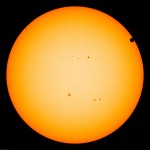
NASA Image
Located approximately 93 million miles away is our star, the sun. The sun is the beating heart of our solar system and is in essence a hot, glowing ball of plasma with an influence that extends well beyond the orbit of Pluto. Without our sun there would be no heat or life here on earth. The gravity of the sun holds the entire solar system together. The sun generates an electrically charged magnetic field that is conducted throughout the solar system creating a stream of electrically charged gas — the solar wind — which travels through the solar system in all directions.
The sun’s interaction with our planets drive the ocean currents, weather, climate, our seasons, the radiation belt and the auroras. Although it is the only one we have, our sun is one of billions of yellow stars throughout the Milky Way. The sun and our entire solar system formed within a giant rotating cloud of gas and dust — a solar nebula — approximately 4.5 billion years ago. As gravity caused the nebula to collapse, it began to spin faster creating a flattened disk. Our sun was created when the bulk of the material, 99.8% of the mass of the solar system, was drawn to the center, and under the influence of gravity ignited to create our star.
Our sun is 1.3 million times the size of the earth! With a radius of 695,508 km and as much as 332,946 times the mass of the earth, our sun may seem like a very large star, but it is in fact an average star and there are many more that are several times larger. Different parts of the sun rotate at different velocities but at the equator the sun spins around approximately once every 25 days. At its poles, the sun spins around once every 36 days.
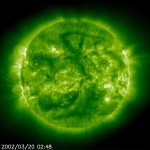
NASA Image
The sun’s mass, like all other celestial objects, is held together by gravity. The sun itself consists of six different regions: the core, the radiative zone, the convective zone, the photosphere (which is the visible region), the chromosphere and the corona. The temperature of the sun’s core is 27,000,000°F, a temperature that is hot enough to sustain thermonuclear fusion. At the core, atoms of hydrogen are fused (cemented together) to create helium and more complex elements.
The core creates energy to produce all the heat and light of the sun. The energy is radiated outward from the core into the radiative zone where it bounces around for 170,000 years until it can reach the top of the convective zone. In the convective zone the temperature drops to 3,500,000°F and large bubbles of hot plasma begin to migrate outward. Although the temperature of the surface of the sun is only 10,000°F it is still hot enough to create and boil carbon!
The photosphere is a 300 mile thick region from which most of the sun’s radiation escapes into space. In our eyes this radiation appears as sunlight and takes eight minutes to reach the earth. Above the photosphere is the chromosphere and the Corona, a tenuous, thin atmosphere. When we hear of or see solar flares and sunspots for ourselves, this is the area in which they occur. The light of this region is far dimmer than that of the photosphere and the only time that we are able to ever see it is during a solar eclipse. Ironically, the temperature in the sun’s atmosphere increases as the altitude increases — reaching as high as 3,500,000°F. The source of this heating is a scientific mystery.
The sun is a giant dynamo that generates a complex magnetic field that extends outward into interplanetary space. This region of influence is known as the heliosphere. A stream of electrically charged gas flowing from the sun carries the magnetic field into interstellar space. As the sun rotates, its magnetic field is churned outward in a giant rotating spiral.
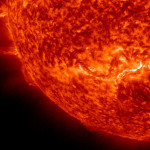
NASA Image
The sun is not always a quiescent star friendly to life on earth. It goes through periods known as solar cycles, which occur approximately every 11 years. At that time the geographic poles of the sun change their polarity and the photosphere, chromosphere and corona transform from quiet and calm into violent. The height of this activity is known as the solar maximum. It is a time of sunspots, flares, solar storms and coronal mass ejections. They are the results of irregularities in the sun’s magnetic field and can release enormous amounts of energy and particles into space, some of which reach Earth. This space weather can damage satellites and affect the power grid, threatening the whole of civilization.
Forty light years away in the constellation Auriga is the giant double binary type G star, Capella (Alpha Aurigae). The two brightest stars of the system are type G, similar to our sun but about 10 times its diameter. The stars are orbited by smaller red binary companions. The two main stars are separated by only about 60 million miles, two-thirds the Sun-Earth distance and orbit each other every 100 days. Both the A and B stars are about 80 times as bright as our sun. Because of this, the system would be too hot to harbor complex life like that of Earth. Nevertheless, Capella is a good nighttime analog to our sun and a good choice for your nighttime viewing.
Capella A and B are both yellow-orange giant stars in a post-main-sequence phase. Both are older and many times larger than our sun. In this stage they have exhausted most of the hydrogen fuel at their cores and have expanded to five times their original size. Over the next few million years both stars will become red giants — a fate that will be shared by our sun in 5 billion years — and expand to hundreds of times their original size.
Capella A is the larger of the two stars with a radius 12 times that of our sun. Capella B as a radius of about nine times that of our sun. Both stars have masses and surface temperatures similar to Sol. Both stars are aged at around 500 million years old. Visually, Capella appears as a single star. A telescope resolves it into a type G binary, but the additional red dwarf binary companions will not resolve in amateur equipment.
Over the past few years red dwarf stars have come into light as astronomers have become more interested in them as possible targets for Earth-like planets. Red dwarf stars are much smaller than our sun and burn much cooler. But they also burn much longer and this combination opens the possibility to earth-like worlds occupying the Goldilocks zone in a proximity much closer to the star. Red dwarf stars also exist in a greater population than any other star type in the Milky Way galaxy.
Science fiction fans will remember that 40 Eridani A is the star of the fictional planet Vulcan, home to the first officer of the starship Enterprise, Mr. Spock. Unfortunately, no planet is known to exist around this star. Current technology is not up to the task of finding one. It has been calculated that a planet circling 40 Eridani A would be located at position of .68 AU away, 2/3 the sun-earth distance. The B and C stars would burn brightly in the Vulcan sky. Although both stars would be visible during the daytime their light would not be bright enough to completely negate the nighttime sky from the inhabitants of 40 Eridani A.
40 Eridanis C is a red dwarf star located 16.5 light years away in the constellation Eridanus. It is a member of a triple star system of Omicron Eridani composed of dwarf stars. The A star is a main sequence dwarf type G, similar to our sun but much smaller. 40 Eridani B is a white dwarf and 40 Eridani C is a red dwarf. The white dwarf B star would put out so much radiation that any planets circling it would be sterilized by its ultraviolet radiation. 40 Eridanis C flares with periodic increases in x-rays in addition to visible light. This, too, would prohibit the possibility of life developing on any planets orbiting this world. However, the star is an example of an M class dwarf and should be considered a good analog to Proxima Centauri B, our nearest neighbor which is now believed to harbor an Earth-like world.
Because of its close proximity to earth, 40 Eridani C is an easy telescopic target and another example of a Ghost of Stellar Present. Recently the news was buzzing with the announcement of the discovery of a small, possible earth-like planet circling our nearest neighbor, Proxima Centauri B. It appears that this planet resides in the Goldilocks zone of that red dwarf. When scientists talk about Earth-like worlds they are speaking of stars are in the right place – the right distance from their sun — to harbor liquid water. This doesn’t mean that the planet may contain complex life like our own. The search for life in the universe, at the present time, is a search for whatever life we may find. Most of this will probably be microbial similar to the single celled organisms we see on earth. Most of them will probably be extremophiles and thermophiles, organisms capable of existing in environments that would be hostile to us.
The existence of life on other worlds will certainly be a transformative experience for the human race. Given the abundance of organic molecules in the interstellar medium it seems highly unlikely that life doesn’t occur in many places throughout the universe. Scientists are even turning to the moons of Jupiter and Saturn to find primordial life. Even extinct life, contained in fossils on Mars and possibly our moon, could teach us a great deal about the chemistry of life and may help to solve the debate over whether life originated here or was transported to earth via comets.
In A Christmas Carol, Ebenezer’s transformation is completed by a visitation from the ghost of Christmas future. After Ebenezer witnesses the loneliness and sadness that he could have prevented during his lifetime he repents as he kneels at his own grave. In the story, Christmas Day is tomorrow and we are led to believe a Christmas future, the day upon which Ebenezer is resting in a lonely grave, may be tomorrow. In fact, for all he knows Ebenezer may already be dead and the ghost of Christmas future may be simply showing him events that he cannot prevent. After all, he does ask a non-responsive ghost of Christmas future if the events he has witnessed are things that will be or things that must be.
As soon as Ebenezer awakens to realize that he is still alive and the ghosts have delivered upon their promise to reveal all to him in one night, he is an elated man (on Messier cloud nine) who immediately sets about to his business — mankind! Now I don’t know about you, but if I were kept up all night I would not be as cheerful as Ebenezer — at least not before I’ve had a few hours sleep and an IV bag full of coffee. That even includes awakening on Christmas Day with the knowledge that under the tree was that workout DVD I so coveted!
The Ghosts of Stellar Future
We do not have to fear the ghosts of stellar future because that takes place billions of years from now. Eventually our own star will bloat into a super red giant, then shed off its outer layers and become a planetary nebula similar to the Ring nebula in the constellation Lyra. The universe itself may have already seen its greatest star forming phase. As dark energy propels all the atoms of the universe apart into an eternally inflating universe, the stars we see today will eventually fade from view until they themselves are flung apart by the forces of that energy. While A Christmas Carol may have a happy ending, a Cosmic Carol will have a cold and tragic one.
The ghosts of stellar future that will visit upon us will be the ghosts of the astronomical near future — billions of years from now. We can see many of the spirits roaming our own Milky Way galaxy today, old stars that have grown into the monsters of the present. They are examples of stars of the future — stars like our sun and many of the others currently inhabiting our galaxy and the rest of the universe.
If there is an outstanding of the ghost of stellar future in December’s sky it would have to be Betelgeuse in the constellation Orion. Designated as Alpha Orionis, Betelgeuse is one of the brightest stars in the winter sky and part of the winter triangle. Betelgeuse is a super red giant near the end of its life cycle. If Betelgeuse was located at the center of our solar system its surface would extend beyond our asteroid belt, consuming all the inner planets out to Mars. It is located 640 light years away in the shoulder of the constellation Orion. When Betelgeuse dies it will produce an enormous supernova explosion, sometime within the next million years.
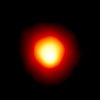
Like the star Mira in the Constellation Cetus, Betelgeuse is a runaway star plowing through interstellar space at 30 kilometers per second and leaving a bow shock in its wake. It is also classified as a semi-irregular variable star with periods of variability from 400 to 2100 days. Betelgeuse possesses at least 20-30 times the mass of our sun and 2 million times its volume. It shines 100,000 as brightly as our sun. High mass stars such as Betelgeuse exhaust their fuel very quickly, existing for only a few million years, as opposed to our sun which will live for billions of years. Betelgeuse is aged at 10 million years and is already nearing the end of its lifespan!
Stars at least five times the mass of our sun can grow into super red giants at the end of their life cycle and go out in a grand supernova explosion that results in either a nebula, similar to the Great Orion nebula, a neutron star or a black hole. The fate of Betelgeuse is likely to be another nebula similar to that of the Great Orion Nebula (M 42).
Stars 1.5 to 3 times the mass of our sun grow into red supergiants, die in a supernova explosion and leave a neutron star, while other, more massive stars can go on to produce a nebula or black hole. All of that depends upon their mass and how their atoms recombine in the final moments of their lives. Stars 15 times the mass of the sun may continue to contract to form a singularity—a black hole.Because of its mass Betelgeuse likely to become a neutron star. Neutron stars occur when the core of the star is compressed tightly and the electrons are stripped off from the atoms. The result is a large ball of nuclear material — matter of the atomic nucleus — the size of a city, such as New York or Paris. Consider an object twice the size of our sun compressed down into a city-sized object. The core is so dense and the gravity is so enormous that a single teaspoon of neutron star would weigh billions of tons!
Because of its density the gravity of a neutron star is so immense that to escape it you have to have a velocity of half the speed of light. A mountain on the surface of a the star would only be millimeters high. Light traveling around such a star would be gravitationally lensed, so astronomers would be able to see things behind a neutron star. A neutron star would compact 500,000 times the mass of the earth into a sphere of only 12.4 miles.
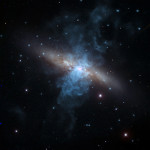
NASA Image
As the core of the star continues to collapse inward, its rotation increases in it can spin up to thousands of times per minute. These rapidly rotating stars are known as pulsars. They can emit beacons of light that can be picked up in the x-ray and radio spectrum. When viewed from Earth these pulsars resemble the beacon of a lighthouse. As material from the pulsar accelerates within its magnetosphere it produces gamma rays, which can slow the pulsar down. If the beam from a pulsar does not flash in the direction of earth, cannot be seen. All pulsars are neutron stars but not all neutron stars are pulsars.
Magnetars are neutron stars that have magnetic fields thousands of times stronger than the average neutron star. The drag of the magnetic field slows the star down so it takes much longer to rotate than a pulsar. Magnetic fields can be so strong that they will distort the shapes of atoms! A fracturing of the surface of a magnetar can release a large pulse of radiation that can be detected up to tens of thousands of light-years away. This release of radiation is known as a starquake. Magnetars can remain active for 10,000 years, after which the magnetic field is fully dissipated and the star cools down.
Sometimes neutron stars will collide and create a black hole. This process takes milliseconds to
occur. The rapidly rotating black hole created from the two neutron stars spins so fast that it emits jets of material that travel light years back into space. Images of these “quasars” have been seen at the centers of galaxies where supermassive black holes are rapidly spinning and digesting orbiting stars! In their gluttonous feeding, however, enormous amounts of material are ejected from the poles of the black hole into interstellar space. These are the jets that we see in images of quasars. Colliding neutron stars produce gravitational waves that can be detected with devices such as the LIGO detectors here in the United States.
What a piece of work is a man! How noble in reason, how infinite in faculty! In form and moving how express and admirable! In action how like an Angel! In apprehension how like a god!
Hamlet, Act 2, scene 2
Oh, if William Shakespeare had only been an astronomer! He might have written about what a piece of work the universe is. How elegant in its construction and workings, how infinite in breadth! How moving in mystery and intrigue! How secretive and yet willing to share her secrets! To look into her eyes is to look into a mirror and see yourself!

